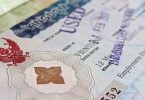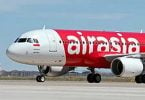The A (H1N1) flu is making it difficult for Malaysian tourism authorities to meet the targeted one million Chinese visitors this year.
It is a case of too much transparency in the dissemination of information on the A (H1N1) pandemic in China.
News of the flu dominating headlines, te-levision and the Internet – something unheard of in the early years of the Com-munist rule – has the Chinese tourism industry worried.
“With experience in tackling the SARS (severe acute respiratory syndrome) outbreak in 2003, the Chinese government has become more transparent and serious in handling any disease and disaster,” said Beijing Shishang International Travel Agency Co general manager Ma Yanhui.
“Over the past two months local coverage on A (H1N1) has been very important for our people to keep tabs on the situation, but at the same time it has discouraged many to travel overseas.”
The tour operator raised the issue during a dialogue with Tourism Minister Datuk Seri Dr Ng Yen Yen who visited Beijing, Shanghai, Wuhan and Guangzhou last month on encouraging Chinese tourists to visit Malaysia.
Ma’s company alone has seen more than 50% fewer customers registering for tours abroad, though domestic tours are still very much in demand.
He said the Chinese authorities had advised the people against travelling to reduce the risk of contracting the disease, but tourism relied very much on people travelling.
“Now that the World Health Organisation has revised A (H1N1)’s definition – that it is not a deadly and incurable disease – we hope the media will play a bigger role to make the people feel comfortable to travel again,” he said.
According to a report by the China Travel Research Institute, the confidence index on the outlook of the industry among tour operators dropped from 99 points to 69.5 in the first-half of the year.
Tour operators are facing the most difficult time since the SARS setback, with a double impact from both the global financial crisis and A (H1N1) pandemic.
There have also been staff retrenchment among the hotels and a decline in the prices of tour packages and salaries of workers in the industry, the report notes.
In view of continuing community outbreak of A (H1N1) in major tour destinations like Hong Kong, Beijing and Guangdong province, it will take some time for the industry to recover, but it will not be any worse than the SARS experience.
During the SARS period, revenue from the industry plunged to 488bil yuan (RM254bil), 12.3% lower than that in 2002.
As of Wednesday, China recorded 2,210 A (H1N1) cases, of whom 2,074 had recuperated. There has been no death related to the disease.
The Malaysian Tourism Ministry is faced with a great challenge to boost tourist arrivals from China, and the A (H1N1) situation in Malaysia does not help either. There have been 1,525 cases and 15 deaths as of Friday.
Dr Ng said the wide media coverage on the pandemic had painted a bad image of Malaysia and foreign tourists were avoiding the country.
“Almost every day news of the A (H1N1) virus are all over the first few pages of the newspapers, and this has made our job in the ministry so hard. I have pleaded with the Health Minister not to highlight the pandemic so prominently,” she said.
She said it was now better as such news had not been played up so much in the media lately.
The minister also took the opportunity of her trip to China to meet the Chinese media so that the ministry could paint a more accurate picture of Malaysia.
She said A (H1N1) was a common influenza that could be caught by anyone and if the victim sought proper treatment in the early stages, the disease could be cured easily.
“You should not worry about travelling to Malaysia. It is safe from the A (H1N1) virus and the pandemic situation in the country is not as bad as you think,” she said.
Dr Ng has every reason to be anxious about tourist arrivals from China. Last year Chinese tourists made up about 950,000 of the 22 million tourist arrivals in Malaysia.
Before the first A (H1N1) case surfaced in Hong Kong in May, Malaysia had set a target of bringing in at least one million Chinese tourists. But now, due to the flu scare, the target may not be achievable.
All is not lost, however. There is still hope to lure Chinese visitors during the October Golden Week – when China celebrates its National Day on Oct 1 followed by a week-long holiday – and also in the winter months.






















